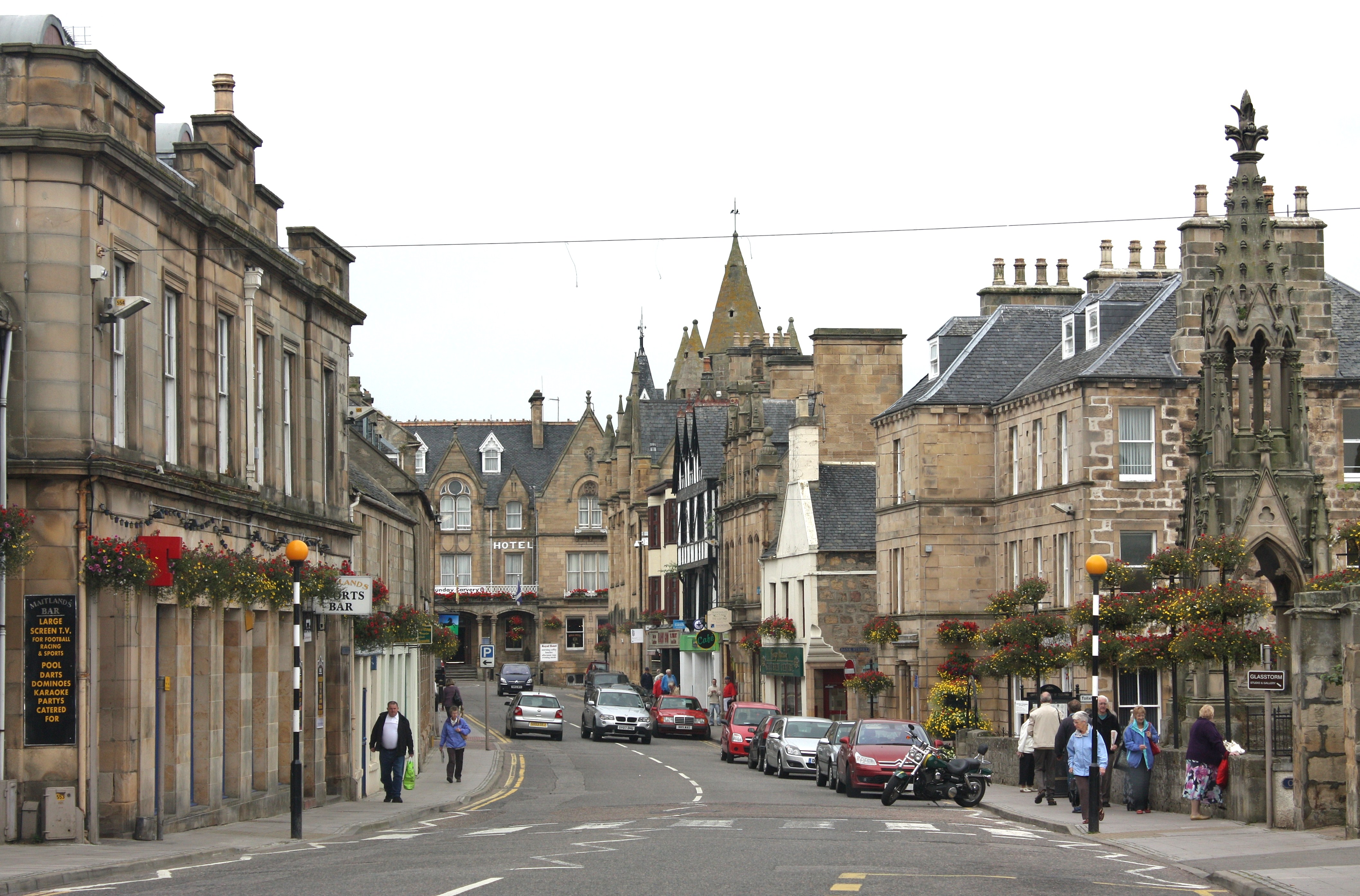 |
|

Best viewed in
|
Tain is a royal burgh and parish in the County of Ross, in the Highlands of Scotland. The name derives from the nearby River Tain, the name of which comes from an Indo-European root meaning 'flow'. Tain was granted its first royal charter in 1066, making it Scotland's oldest royal burgh, commemorated in 1966 with the opening of the Rose Garden by Queen Elizabeth, the Queen Mother. The 1066 charter, granted by King Malcolm III, confirmed Tain as a sanctuary, where people could claim the protection of the church, and an immunity, in which resident merchants and traders were exempt from certain taxes. These led to the development of the town. Little is known of earlier history although the town owed much of its importance to Duthac. He was an early Christian figure, perhaps 8th or 9th century, whose shrine had become so important by 1066 that it resulted in the royal charter. The ruined chapel near the mouth of the river was said to have been built on the site of his birth. Duthac became an official saint in 1419 and by the late Middle Ages his shrine was an important places of pilgrimage in Scotland. King James IV came at least once a year throughout his reign to achieve both spiritual and political aims. A leading landowning family of the area, the Clan Munro, provided political and religious figures to the town, including the dissenter Rev John Munro of Tain (died ca. 1630). The early Duthac Chapel was the center of a sanctuary. Fugitives were by tradition given sanctuary in several square miles marked by boundary stones. During the First War of Scottish Independence, Robert the Bruce sent his wife and daughter to the sanctuary for safety. The sanctuary was violated and they were captured by forces loyal to William II, Earl of Ross who handed them over to Edward I of England. The women were taken to England and kept prisoner for several years.
|

